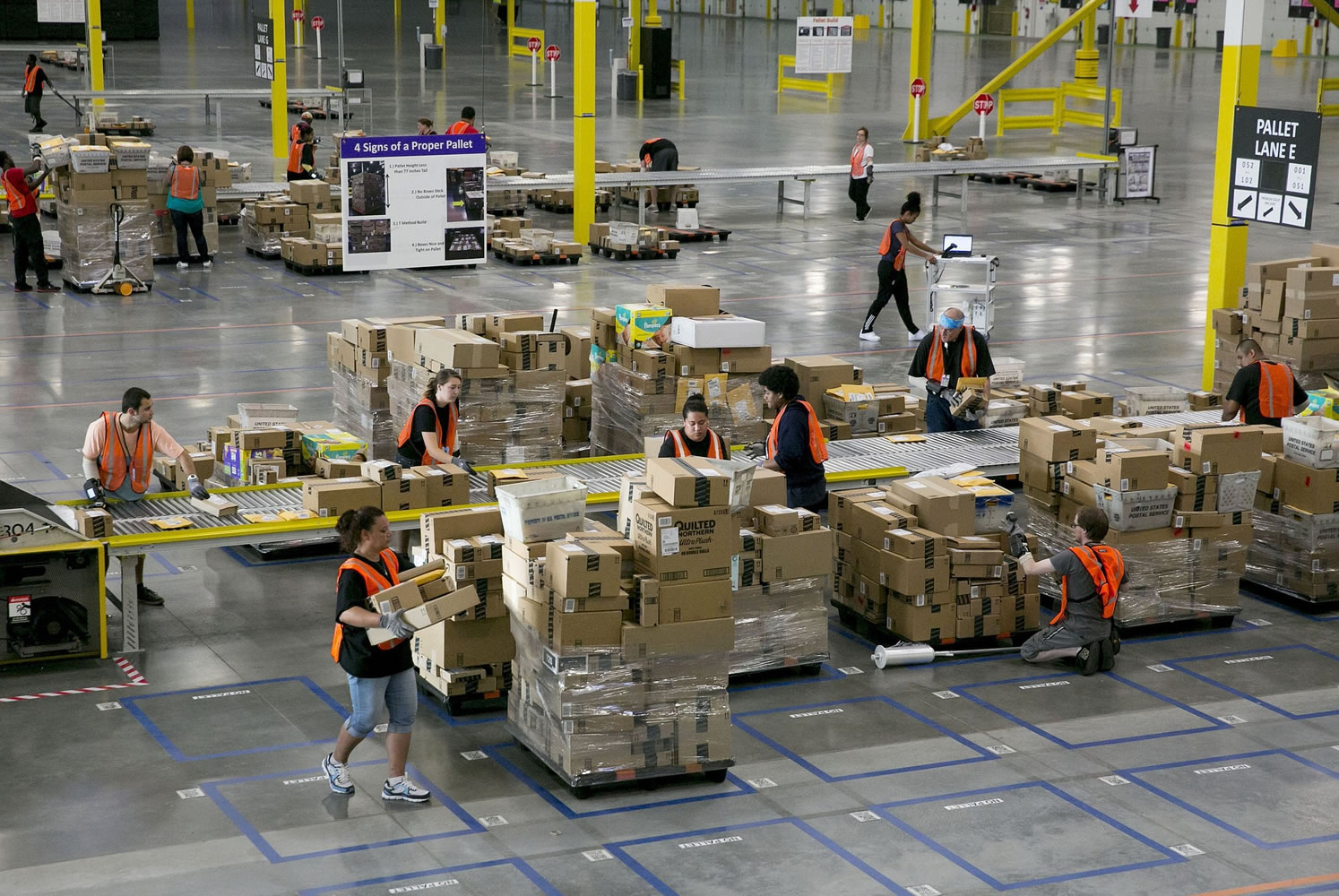KENT — As Mike Roth steps into Amazon.com’s newest warehouse here, he spreads his arms wide and asks what makes this facility different from the 96 other warehouses the Web giant operates around the world.
To anyone who has ever set foot in one of those 1 million-square-foot buildings, known in Amazon parlance as fulfillment centers, the answer is obvious. There is not a product in sight. No books. No toasters. No toothpaste. There aren’t the rows and rows of shelves on which those products are stored. There aren’t any workers who stow the products, pick them from the shelves or box them up.
Instead, the newly opened Kent warehouse is teeming with sealed parcels, full of items Amazon customers have ordered. Those packages zip along a maze of conveyor belts, where computers and workers sort them to ultimately deliver them to individual post offices in Seattle, Portland, Spokane and points in between.
By controlling the delivery process right up to the last mile, Amazon can get packages to customers on Sunday, a service it announced with the U.S. Postal Service last November. And with the opening of the Kent facility, Sunday delivery has begun in the Pacific Northwest.
“When you see us announcing Sunday delivery, you can assume a sortation center is close by,” Roth said.
The “sortation center” also lets Seattle members of its $99-a-year Prime subscription service order as late as 11:59 p.m. to get two-day shipping at no extra charge. That’s nine hours later than the previous cut-off time for two-day delivery. Non-Prime customers in Seattle also can use the later cutoff order times for two-day delivery if they are willing to pay for the service, which starts at $1.99 an item and climbs depending on size and weight.
By the end of the year, Amazon will have more than 15 sortation centers, all in the United States, according to Roth. Each will employ several hundred workers.
“There’s going to be very rapid growth in the next couple of months,” Roth said.
The sortation centers make sense only because Amazon has grown so large. The company won’t disclose how many packages it ships daily, nor will it say how many go through the new Kent facility, except that it will be “tens of thousands” a day. It’s that massive volume that makes it financially feasible to control the shipping on so many parcels right up to the last mile. It’s unlikely any other online retailer has enough volume to even try their own sortation center.
Sortation centers move Amazon a step closer to erasing one of the key barriers to customers shopping online. Ultimately, Amazon would like to handle next-day delivery from the Kent site, something a company spokeswoman said is possible from other sortation centers.
The facilities enable Amazon to hold on to packages much farther down the delivery chain. In the past, Amazon might have shipped a DVD ordered by a Seattle shopper, for example, from its fulfillment center in Sumner. There, workers would have boxed the item and handed the package off to one of several carriers, such as UPS or FedEx.
Now, Amazon will put that DVD onto a truck that will bring it, along with tens of thousands of other packages on other trucks to this Kent site, generally within a day or so for items that are shipped two-day delivery.
Amazon workers, then, sort all the packages by ZIP codes, place them on pallets and deliver them to local post offices — for now, the new sortation centers will deliver only to U.S. Postal Service offices — by 6 a.m. to 8 a.m. to arrive in that day’s mail.
“We can control the packages much longer,” Roth said.
The sortation centers make Amazon’s already complex delivery system even more elaborate. Over the years, the company has developed algorithms to figure out the most optimal way to get orders, often containing multiple items shipped from different warehouses, to customers.
While the sortation centers should make delivery even more efficient, it adds another layer of algorithmic intricacy to the process. Roth said developing the sortation centers has taken “a couple of years.”
“It’s a milestone for us,” Roth said.



